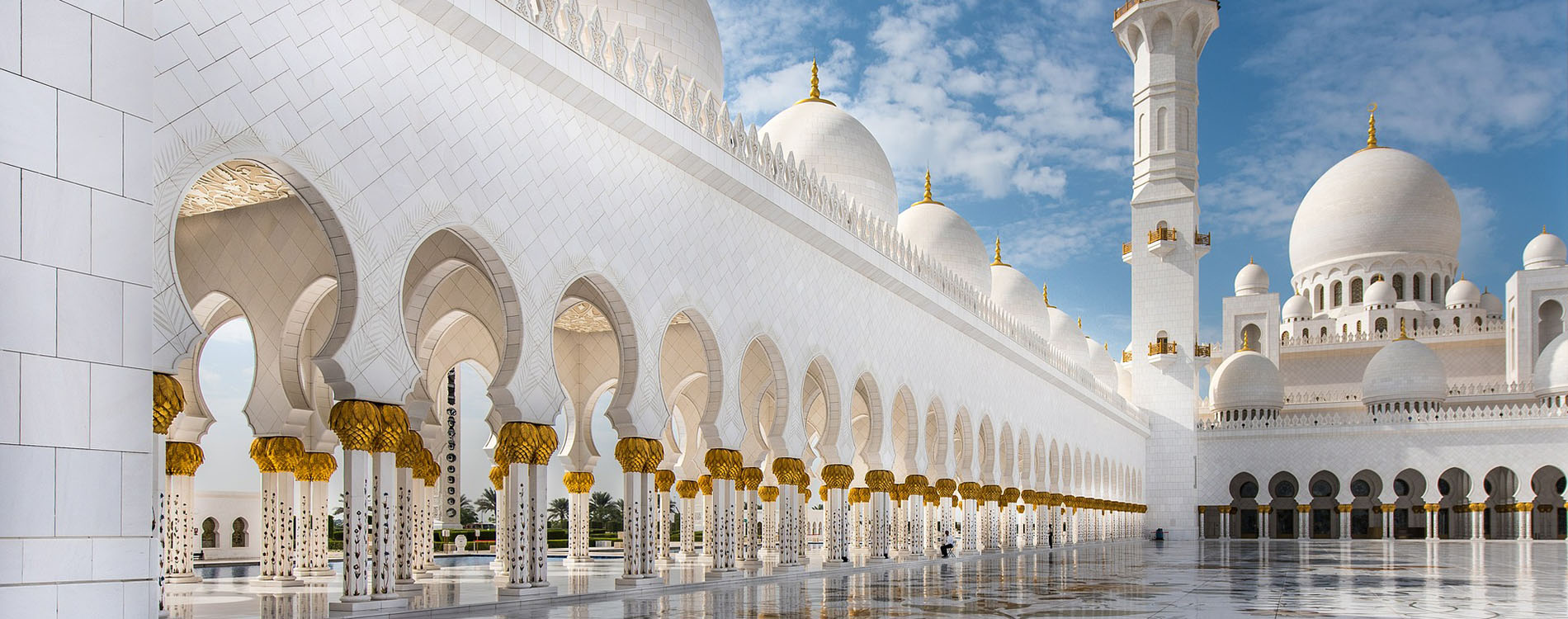Born in Mecca in the seventh century A.D., Islam is the youngest of the major religions. The adherents of the religion believe that there is only God (Allah), whose words have been written down and taken form in the holy book Koran, which still serves as the main spiritual text. The founder of Islam is considered – the prophet Muhammad, who lived from 570 to 632, the followers of Islam believe that this man was a prophet of God. Islamic religious law not only establishes the five pillars of Islam, but also establishes rules and regulations on almost every aspect of a follower’s life. There are two main streams of Muslims, the Sunnis (the largest in the world, 80% of all Muslims) and the Shiites (15% of all Muslims). Islam is the fastest growing religion on the planet in absolute terms of followers around the world.
Followers of Islam are called Muslims (“Mohammedans”, Arabic for “submissive to God”). A Muslim is a person who recognizes the revelation of Muhammad as sacred in Islam (the sacred things, primarily the Holy Koran), the doctrine based on it (the foundations of the doctrine are contained in the shahada, the pillars of faith and the pillars of Islam), and the form of realization of this doctrine (the community, called the umma).
Islam may be evaluated in various ideological systems as a false religion (e.g., Christianity) or a false ideology (e.g., scientific atheism), but even with the well-known problems with the definition of religion, no one doubts that Islam is a religion, that is, a phenomenon with the sacred at its core.
Islam as a strictly monotheistic religion
Monotheism is a form of theism that recognizes the existence of one and only God. Because of the controversy with Christians over the Trinity, Islam is known as a religion of strict monotheism. In Islam, deviation from strict monotheism is known as “shirk” (“polytheism”), that is, “giving God a comrade” (as if God is not unique in his actions, such as creation, but has companions) and is considered a grave sin.
Ancient Arab beliefs represented various manifestations of paganism, the most common of which was idolatry. It consisted of worshipping various gods, rocks, trees, animals, stars, and stones. Of particular importance was the Kaaba, a cubic temple in Mecca, near which each Arab tribe placed an image of its deity. Monotheistic beliefs were not widespread and were associated with the Hanifs, about whom little information has survived (Hanifism ceased to exist after the suppression of the revolt of some Arab tribes against the caliphs). It is known that in addition to monotheism (associated with the Israelite prophets), the Hanifs were notable for their asceticism.
Social life of the Arabs was based on the archaic tribal system. The leaders of the tribes (“banu”) were chiefs – sheikhs (“the elder,” the head of the family, then in Islam also the authoritative scholar; the teacher; the leader of the religious group; the person who lived at the holy place and helped pilgrims; the leader of the group of pilgrims). The Arab tribes waged constant wars among themselves; their economy was based on trade, robbery, partly on cattle-breeding and oasis farming. The basic principle was collectivism, the most terrible punishment was banishment from the clan. Men were the basis of the tribe, women had practically no rights: polygamy was unlimited, and in some tribes there was a custom of burying newborn girls in the ground.
The founder of Islam, Abu al-Qaisim Muhammad (note 570 – June 8, 632), is, according to the vast majority of scholars, a historical figure. However, one can only learn about his life from traditional legend (the Sunnah of the Prophet, the most important source of Islam after the Qur’an). Muhammad came from a family of Hashemites. His family was engaged in providing water for the pilgrims in Mecca. As a young man he also herded sheep and worked as a trader for a noble Arab woman, Khadija bint Huwaydil, who later became his wife. Muhammad was of high moral character and authority. At the age of forty he sought solitude. He often went to a cave on Mount Hira near Mecca, meditated, and eventually had a religious experience (a revelation) from which the Qur’an appeared, and Muhammad began publicly preaching a new religion to the Arabs (613).
Muhammad’s preaching was persecuted by the Arabs, and in 622, the Muslims were forced to move to Medina. This migration (“Hijra”) is the beginning of the Islamic calendar and marks the boundary of two periods in the life of Muhammad and the creation of the Qur’an. Muhammad and the early Muslims fought battles with their adversaries that resulted in the conversion of Medina and Mecca to Islam and the destruction of the idols around the Kaaba. According to traditional Muslim beliefs, Muhammad conducted all armed campaigns solely as part of a defensive war.
